Excavation of Changsha Kingdom Ruins from Western Han Dynasty in Changde, Hunan Province
Chinese Archaeology
Source - http://www.kaogu.cn/en/detail.asp?ProductID=3061
From March 2010 to April 2011 the Archaeology Department of Changde Museum in Hunan Province have conducted a salvaging excavation for more than a year at Nanping in Changde, in coordination with infrastructure projects. Totally 55 tombs covering periods of Western Han, Xin Dynasty, Eastern Han, Six Dynasties and Song, Yuan, Ming dynasties were unearthed, yielding about 500 valuable artifacts, including objects made of bronze, iron, jade, stone, colored glaze, pottery, celadon, lacquer and wood. Especially the excavation to family tombs of an official named Liao Fu, who was the Lang zhong ling (Prefect of the Gentlemen of the Palace) of Changsha Kingdom in Western Han and Xin dynasties, brings to light a group of precious relics which bear accurate dating. The unique structure of mound burial of the family tombs is never before seen among contemporary tombs in China, which fills a void in mound burial archaeology in Hunan, and provides new materials for researches on ancient mound tombs.
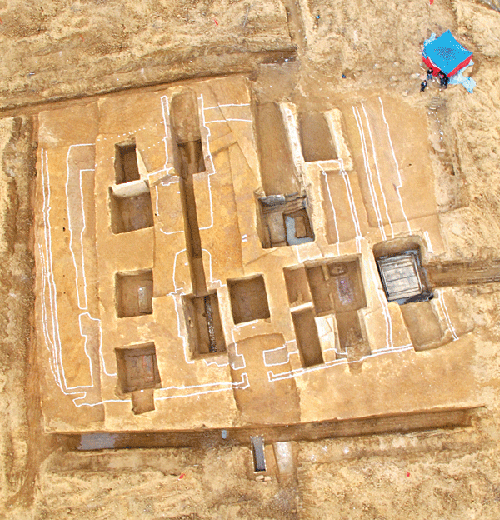
The cemetery is located at east of Changde downtown in the alluvial plain of Dongting Lake, average elevation 32-33 meters. Six tomb mounds are preserved before excavation. Three of them are brick structures dating to Eastern Han to Six Dynasties. The rest three (including 2010D1, D2 and D3) are all mound burials, arranged in south-north direction with D1 in south and D2 in the middle, and each neighboring tombs respectively 20m and 80m apart.
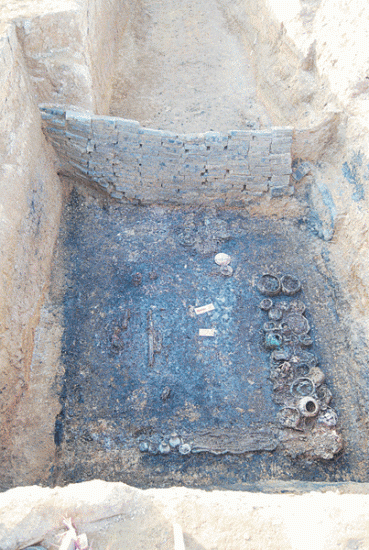
Mound D1 is a mound containing a single burial. It is in round shape with 32 m in bottom diameter and 5.5 m in height. Although having been robbed repeatedly, the tomb preserves a talc seal saying its owner is the governor of Chanling County of Wuling Prefecture in Western Han Dynasty.
Mound D2 is a group of tomb mounds containing multi-burials. They are in irregular semi-circular shape, with the largest one 37 m long and 4 m high. The middle part of the mound is overlapped and destroyed by a brick tomb (D2M1) from early Eastern Han. Only two Western Han mound burials (D2M7and D2M11) remain.
Mound D3 is a largest mound collection with the highest rank, most abundant burials and relics as well as clearest structures. It also documents the accurate starting and end dates of tombs, names of occupants and their identities. It is in nearly round shape with 50 m in bottom diameter, 18 m in top diameter and 7 m in height, occupying an area of about 4,000 square meters. To the south, west and north of D3 there distribute drainage ditches embracing the whole mound and basically forming an enclosed grave yard.
There are 12 shaft tombs found inside the mound, which are arranged in two lines in south-north direction. Except tombs D3M16, D3M9, D3M18 and D3M30, the rest 8 tombs all have a passage. Entrances of these 8 tombs are sealed with green-gray clay about 0.2-0.3 m in thickness, in the same height with that of tomb opening and the same or broader width with that of passages. Judged from the burial furniture’s traces and locations of bronze mirrors and talc Bi disks found in 12 tombs, all occupants could be buried with the head toward west. All 12 tombs contain burial furniture, which are either an inner coffin with two outer coffins or an inner coffin with an outer coffin.
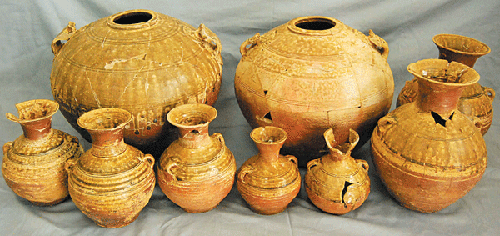
The three mounds with 15 burials contains abundant artifacts including 440 objects made of bronze, iron, jade, stone, colored glaze, bone, ceramic, celadon, lacquer and wood. Their arrangement follows certain laws. For example, personal items like bronze mirrors, jade pendants, seals and combs are usually put in exquisite lacquer caskets and then placed inside the inner coffin near the head or the body. There are 7 tombs containing bronze daggers and bronze or iron ring-handled knives in inner coffins. The seals of the deceased are placed near the middle part of the bronze dagger. All tombs contain coins, while seldom seen in inner coffins. All clay imitation of gold ingots and coins and large deal of real coins are placed in outer coffins. Lacquer caskets containing lamps, plates and incense burners are all put at the head end and kept apart from other objects.
Among the 12 tombs in Mound D3, three yield seals, including Tomb D3M27, D3M24 and D3M26, which provides accurate information for their dating and names and identities of tomb occupants, with the help of burial coins.
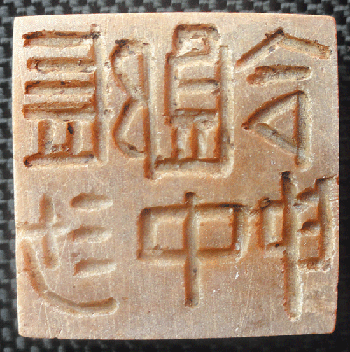
Tomb D3M27 (including D3M29) is the earliest tomb in Mound D3, indicating the unusual status that the occupant possesses in the whole family. The tomb yields 7 weapons including a bronze dagger, a ring-handled knife, a spear, a crossbow and an iron halberd, and other 61 objects including bronze Ding tripods, pots, He vessels, Fang vessels, talc objects, celadon wares, hard potteries and iron wares. Inside the inner coffin beside the bronze dagger there is a talc seal with inscription of Changsha Langzhongling Yin (seal of Prefect of the Gentlemen of the Palace) and a bronze seal inscribed with Liao Fu Siyin (private seal of Liao Fu). Judging from the seals and bronze coins, Tomb D3M27 could be dated to from 118 to 104 BC. The occupant Liao Fu is the Prefect of the Gentlemen of the Palace of Changsha Kingdom in Western Han Dynasty, then the second king Dai Wang Liu Yong was on the throne.
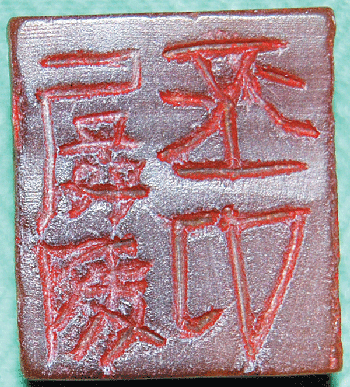
The Mound D3M2 is an important tomb located at the north of D3M27. It yields a set of five bronze Ding tripods and 57 other objects, such as gilt bronze objects including basins, plates, incense burners, handled-pots, bowls, Lei Jars, bronze objects including daggers, ring-handled knives, Fang vessels, bottles, kitchen ranges, mirrors, and jade pendants, belt buckles and eared cups. The burial of thousands of Wuzhu coins and some Daquan Wushi coins, and the phenomenon of sealing the tomb entrance with green-gray clay supported by a brick structure are indicative of a high ranking of the occupant. Two gilt bronze boxes with Lingnan style and the potash glass bowl with Southeast Asian style demonstrate a certain relationship with the Lingnan region. The tomb structure displays typical characteristics of transitional forms from shaft pit to brick tombs.

CIV 108 : Civilisations de la Chine antique / Ancient China : Origins to Empire
Mound D3M26 is located at the north most of the area. It yields two sets of bronze Ding tripods and Fang vessels, and 34 other objects including bronze daggers, ring-handled knives, models of wells and kitchen ranges, Fu vessels, ladles, Jiaodou cookers, Daquan Wushi coins, jade seals, jade belt hooks, talc Bi disks, wooden figurines and hard pottery jars. Especially the private Hetian jade seal with inscription of Liao Hong clearly manifests that the occupant Liao Hong must be an important member of the family.
The excavation to Liao Fu’s family mound burials at Nanping in Changde makes it the first thorough exploration to a totally new type of family tombs from Western Han and Xin dynasties within Hunan Province. It provides new materials for studying the history of Changsha Kingdom in Han Dynasty. (Translator: Tong Tao)